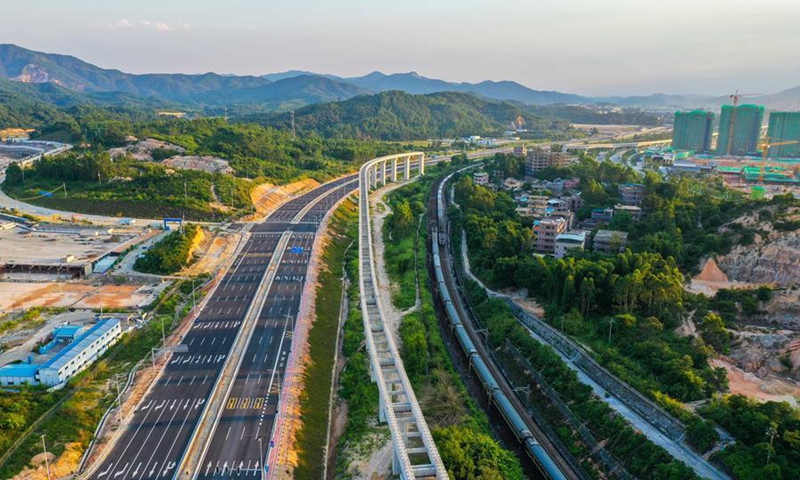China plans to build two 600 km/h maglev lines
Source: Global Times Published: 2020/9/16 16:57:39

Aerial photo taken on Aug. 9, 2020 shows a medium-low-speed maglev railway under construction near Chimelong theme park in Qingyuan City, south China's Guangdong Province. The main project of the Qingyuan maglev tour line is expected to be completed at the end of this year. (Xinhua/Liu Dawei)
Two maglev rail routes have been selected to be the pioneer in China's research on the high-speed maglev train system, according to the Chinese Academy of Engineering (CAE) on Wednesday.
The plan of two 600 kilometer per hour high-speed maglev routes, including the Shanghai-Hangzhou maglev, and the Guangzhou-Shenzhen maglev, have appeared on the presentation of He Huawu, academician and vice director of the CAE, during a conference on modern transportation engineering technology on Wednesday, the paper.cn reported.
The Shanghai-Hangzhou maglev will link Shanghai and Hangzhou in East China's Zhejiang Province, with a total length of 164 kilometers. It will also connect the current maglev line in Shanghai linking Pudong Airport.
The Guangzhou-Shenzhen maglev line will connect Guangzhou to Shenzhen in South China's Guangdong Province, with a total length of about 110 kilometers, and it is expected to be connected to Hong Kong's Kowloon station in the future.
The Shanghai-Hangzhou line will be mainly an open line, while the Guangzhou-Shenzhen maglev line will be an underground line, revealed He, who was one of major promoters of China's high-speed railway technology.
China's total high-speed rail mileage of more than 36,000 kilometers, ranks the longest in the world, and China's railway mileage had reached 141,400 kilometers, ranking second in the world at the end of July, according to data.
"While already having developed a modern high-speed rail network, it is necessary to develop a high-speed maglev system with a speed of 600 kilometers per hour. It will not only maintain China's advanced advantages in the field of high-speed rail, but also fill in the speed gap between high-speed rail and air transportation, thus forming a multi-dimensional transportation structure," He noted.
Posted in: INDUSTRIES,BIZ FOCUS